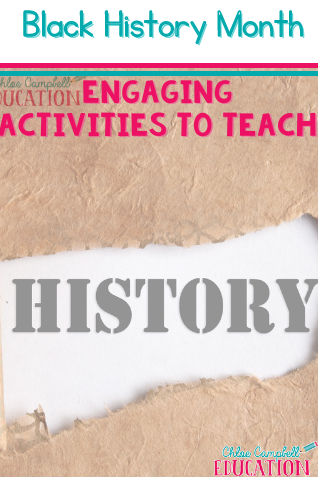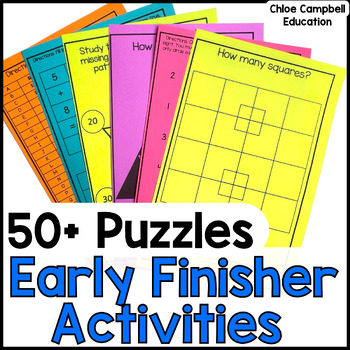How To Teach Opinion Writing To 4th Grade Students
If you teach 4th grade students, then you’re definitely going to teach opinion writing this year.
If it’s your first time, or if writing is a topic you don’t feel confident about, then the whole idea can be nervewracking.
But don’t worry! I’m here to help you.
So in this blog post, I’m sharing all kinds of ideas, tips, and resources to help you teach opinion writing to 4th grade students.
In case you’re in a rush and you’re just looking for opinion writing prompts, I’ve got you covered there, too.
➡️ Click here to grab an opinion writing prompt (comes with paired passages!).

I taught for 11 years and I loved being in the classroom!
I’m passionate about helping students engage with math so they can excel in it, and enjoy it.
You can find more practical tips from here on my website.
You’ll find more ideas and tips over on my Instagram account!
Introduction to Teaching Writing to 4th Grade Students and 5th Grade Students
At this age, writing really starts to take center stage. Our kids are moving past just putting words on paper and starting to explore all the different ways they can use writing to express themselves. Here’s a quick rundown of the types of writing we usually dive into with our 4th graders and 5th graders:
Narrative Writing
This is where students get to let their imaginations run wild. Whether they’re sharing a personal story or crafting a fictional adventure, narrative writing is all about telling a story with a clear beginning, middle, and end. We help them build characters, set up scenes, and create plots that keep readers hooked.
Opinion Writing
Opinion writing is all about helping students say what they think and back it up with good reasons. It’s a great way for them to learn how to think critically and present their ideas in an organized way. Plus, it’s always interesting to see what strong opinions they come up with!
Informative/Explanatory Writing
Here, students learn how to explain things clearly. Whether it’s writing a report, a how-to guide, or an essay on something they’ve learned, the goal is to help them communicate facts and ideas in a way that makes sense to the reader. They practice using details and examples to back up what they’re saying.
Descriptive Writing
Descriptive writing is all about painting a picture with words. Whether they’re describing a person, place, or event, we teach them to use vivid language and sensory details to really bring their writing to life. It’s a fun way for them to get creative with how they describe the world around them.
Research Writing
By 4th grade, students are starting to dip their toes into research writing. This means gathering information from different sources and putting it all together in a report or essay. They learn how to take notes, cite their sources, and organize their findings in a way that makes sense. It’s a great way to introduce them to research skills they’ll use later on.
Each of these types of writing helps our students grow as writers in different ways, and opining writing is especially important.

Why We Need to Teach Opinion Writing
Teaching opinion writing to our students is such an important – and fun – part of what we do!
At this age, kids are starting to really think about the world and form their own opinions, and it’s our job to help them share those thoughts in a clear and organized way.
Opinion writing is all about helping them say what they think and back it up with good reasons, which is a skill they’ll use all the time, both in school and in life.
When we teach them to write opinion pieces, we’re not just helping them with writing; we’re helping them find their voice and build confidence in sharing their ideas.
And honestly, it’s pretty amazing to see the opinions they come up with when they get going!
The Structure of Opinion Writing
When teaching opinion writing to 4th graders, one of the most important lessons is understanding the basic structure of an opinion piece.
This structure typically includes three main parts: the introduction, the body, and the conclusion. In the introduction, students learn to clearly state their opinion on the topic, often with a catchy hook to grab the reader’s attention.
The body of the piece is where they present their reasons, each supported by evidence or examples that strengthen their argument.
Finally, the conclusion wraps it all up by summarizing their main points and restating their opinion in a convincing way.
Teaching students to follow this structure helps them organize their thoughts and ensures their writing is clear and persuasive. It also gives them a solid foundation they can build on as their writing skills develop.

The Importance of Writing Opinion Statements
Writing a strong opinion statement is where it all starts!
This is the part of their writing where students get to clearly say what they think about a topic.
The key is to help them make sure their opinion is clear and to the point.
We want them to avoid being wishy-washy—no “I think maybe” or “it could be.” Instead, encourage them to take a stand with statements like “I believe” or “In my opinion.”
For example, instead of saying “I think dogs might be better than cats,” they could say, “Dogs are better than cats because they’re loyal and great companions.”
That’s much stronger and sets the stage for them to give reasons why.
A clear, confident opinion statement gives their writing direction and makes it easier to build a solid argument around it. Plus, it’s a great way for them to start learning how to confidently express their thoughts!
Supporting Opinions with Reasons and Evidence
Once students have nailed down their opinion statement, the next step is teaching them how to back it up with reasons and evidence.
This is where their argument really starts to take shape. It’s not enough to just say what they think; they need to explain why they think that way.
Encourage them to come up with solid reasons that support their opinion.
For example, if they believe that recess should be longer, they might give reasons like “it helps us focus better in class” or “it’s important for staying healthy.”
But they shouldn’t stop there!
We also want them to add evidence, like facts, examples, or even personal experiences, to really strengthen their argument.
Maybe they can mention a study that shows kids learn better after a break or share a story about how recess helps them feel more energized.
The goal is to teach them that strong opinions are backed by strong reasons and evidence, making their writing more persuasive and convincing.
It’s a skill that will not only make their writing stand out but also help them in discussions and debates down the road!

Opinion Writing Prompts and Paired Passages for 4th Grade Students
If you’re looking for a resource to jumpstart opinion writing in your classroom, this Paired Passages Opinion Writing Prompt is a fantastic place to start.
It’s designed to spark a love of writing in your students with a high-interest topic that they’ll actually want to write about: whether children should be allowed to consume caffeinated beverages like coffee, soda, or energy drinks. Talk about a topic they’ll have opinions on!
This resource is packed with everything you need to get your students writing.
It includes two engaging text sources that provide different perspectives on the topic, giving your students the information they need to form and support their opinions.
After reading the passages, students can dive into the writing prompt, where they’ll state their opinion and back it up with reasons and evidence drawn from the texts.
To make the writing process even smoother, this resource comes with planning sheets and writing paper, helping students organize their thoughts before they start writing. It’s also a great way to meet multiple standards in one activity, including writing opinion pieces (CCSS.ELA-LITERACY.W.5.1), quoting accurately from texts (CCSS.ELA-LITERACY.RI.5.1), and integrating information from several texts (CCSS.ELA-LITERACY.RI.5.9).
Whether you use it for individual writing practice, whole group instruction, partner work, or even as part of your ELA work stations or centers, this resource is incredibly versatile.
It’s also perfect for substitute plans or as a take-home practice assignment. And because it’s designed to align with state writing tests, it’s excellent practice for those high-stakes assessments too. Especially if you’re prepping for Florida’s FSA format!
As the author of both texts (under different pen names so students can practice citing different sources), I made sure this resource is engaging, educational, and easy to use.
It’s the perfect way to help your students get started with opinion writing and build their confidence in expressing their thoughts.
➡️ Click here to learn more about this resource.

Get Even More Opinion Writing Prompts With This Bundle
If you’re on the hunt for a bunch of opinion writing prompts that will keep your 4th graders engaged and thinking critically all year long, this Writing Essays Bundle is exactly what you need!
It’s packed with 18 opinion writing prompts that are sure to get your students fired up, plus 18 informational writing prompts that will challenge them to dig deeper into different topics.
Each opinion prompt comes with two text sources to give your students the background they need to make their case.
Whether they’re debating whether school lunches should be free for everyone, if students should be allowed to use social media at school, or even if the voting age should be lowered to 16, there’s something here to get every student thinking and writing.
To help them get organized, this bundle also includes planning sheets and writing paper for each prompt.
Your students will have everything they need to map out their ideas and write essays that are clear and well-structured.
The opinion prompts cover all sorts of interesting topics—from whether electric cars should be required, to whether kids should get paid for doing chores, and even if financial literacy should be taught in schools.
This bundle is super versatile and can be used in all sorts of ways—individual writing practice, whole class lessons, partner activities, ELA work stations or centers, and even substitute plans or take-home assignments.
Plus, it’s designed to hit key standards, so your students will be building important skills in writing opinion pieces, explanatory texts, and integrating information from multiple sources.
With this bundle, you’ll have everything you need to keep your students busy with meaningful writing activities that are both fun and educational. It’s the perfect way to add more variety and depth to your writing lessons!








 Early Finisher Activities - I'm Done Now What? Book - Enrichment Projects
Early Finisher Activities - I'm Done Now What? Book - Enrichment Projects